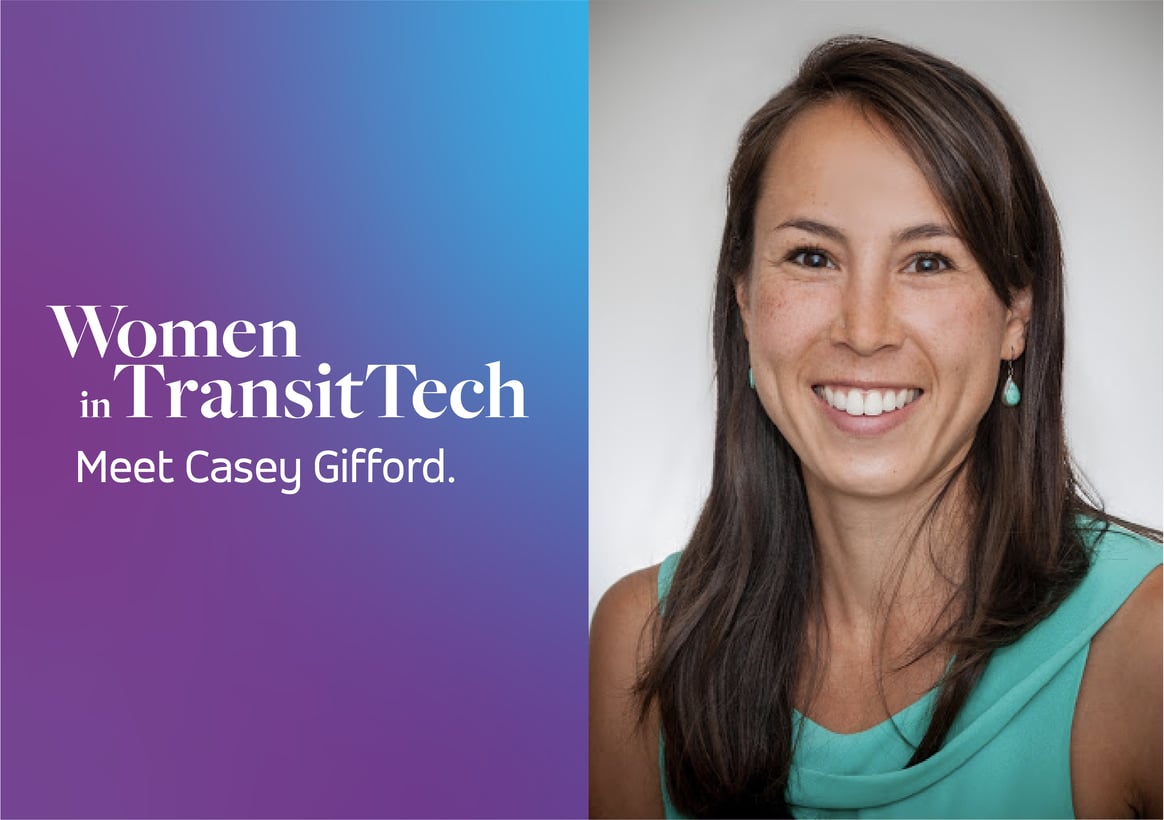Challenging the status quo takes diligence, determination, and vision — especially when it comes to an industry that hasn’t seen a seismic shift since the automobile was invented. And, as it turns out, it’s often women who choose to challenge these norms. In honor of International Women’s Day and throughout the month of March, Via is proud to profile a number of changemakers driving real innovation in their communities and inspiring their peers. Enjoy the story below, and then check out the rest of the series here.
Casey Gifford is a senior planner for King County Metro’s Innovative Mobility program. She is a leader in implementing public-private partnerships that leverage emerging mobility services and new technologies to improve regional mobility, advance equity, improve the environment, and support thriving communities.
Casey led the development, implementation, and evaluation of Metro’s Via to Transit first-and-last mile pilot — one of the top-performing services of its kind. She has worked closely with riders and community groups to ensure innovative services are not only available to all riders, but also prioritize those with the greatest unmet needs, including people of color, low-income riders, people with disabilities, and English-language learners. Casey is a former Fulbright Fellow with a Masters in Urban Planning and Management from Aalborg University.
What did 10-year-old Casey want to be when she grew up? How did you evolve from there to your current position in transportation? Ten-year-old Casey dreamed of being a limousine driver — I thought it would be such a glamorous job. So, clearly I was drawn to the transportation field from an early age, but fortunately evolved to want to serve the mobility needs of everyone, not just the ultra-rich.
What do you think are the most important qualities in a leader? Are there any leaders in particular you look up to? I am such a fangirl of Janette Sadik-Khan, the former transportation commissioner of New York City and now chair of the National Association of City Transportation Officials. I admire that she not only has a bold vision for the future of our streets, but an effective approach for accomplishing that vision. She is known for rolling out scrappy pilots designed with temporary materials that let people experience the change for themselves. She uses community feedback to adjust pilots until ultimately deciding whether to make the change permanent.
What are the big transit challenges in your community that your team is solving with innovative mobility projects? A combination of historic underinvestment in communities of color and the suburbanization of poverty has led to many people not having the mobility they need because of where they live or the hours of day they need to travel. Fortunately, we can now use TransitTech to more efficiently provide mobility in areas and at times when a 40 or 60-foot bus just doesn’t make sense. For example, we are using technology to let people request on-demand trips to and from transit hubs or within low-density neighborhoods. Buses and trains will always be the backbone of regional mobility, but TransitTech is making it easier for us to integrate complementary services that supplement our high-capacity fixed route system and fill in mobility gaps.
In your view, what’s the biggest challenge the transportation industry as a whole will have to tackle in the next 2-5 years? Public transit will play a critical role in our region’s recovery from the pandemic and economic recession, but we’ll need the resources to do it. Given that some riders may be slow to come back — while others may never return due to continued remote work — how can transit agencies continue to demonstrate the critical value we play in our communities? We need to ensure that everyone recognizes the essential role transit plays in our communities: Just because you may not take transit, doesn’t mean that the person stocking your grocery shelves doesn’t rely on it.
Tell us about a defining moment in your professional life that has helped guide you on your path. It has been less one defining moment and more the accumulation of stories I get to hear from customers that has been the most informative to my professional life. It’s incredibly fruitful to get to hear from customers about how our mobility system is or is not working for them. I have a lot of privilege and so it’s so helpful to have my blind spots illuminated. I don’t personally know what it’s like to navigate our region with a disability or without access to a smartphone, so every opportunity where I get to learn more about the challenges and needs of our community helps guide me to be a better transportation planner.
And finally, what drives you? (Pun intended!) My grandparents immigrated to Los Angeles from China in the 1960s. My grandmother — who had a sixth-grade education, didn’t speak English, and was raising four children — relied on public transportation to get to her job as a seamstress across the city. Into her 90s, having never learned to drive, she continued to depend on the bus to go to the market. Her ability to flourish in the US and her personal freedom to move about have been inextricably tied to public transit.
Having seen first-hand the power of public transit to transform lives, I’m driven to ensure everyone — and especially those with the greatest needs — has reliable transportation to access opportunity and thrive in their community.




%206.png?width=71&height=47&name=The%20Buzz%20Blog%20Hero%20(1750%20x%201200%20px)%206.png)